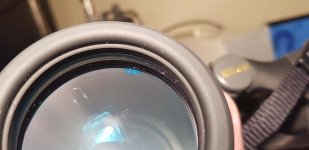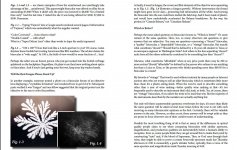I noticed today what appears to be an oil or fungus contamination in a couple of places on the inside of the objective lens (one side only).
These 10x42 SE were purchased in 2011 from Clifton Cameras and have the serial number 8700.
I have attached a photo and I'm hoping someone may be able to tell me what it is (the containment is top right).
The spooky thing is that I purchased some 10x42 SE in 2007 from ebay and these had a similar problem. I returned them to the seller who confirmed they were only 3 months old. Now for the spooky part - I just looked at some old images that I sent the seller and noticed the serial number of these was 8704!
(4 years older than mine and only 4 digits apart).
These 10x42 SE were purchased in 2011 from Clifton Cameras and have the serial number 8700.
I have attached a photo and I'm hoping someone may be able to tell me what it is (the containment is top right).
The spooky thing is that I purchased some 10x42 SE in 2007 from ebay and these had a similar problem. I returned them to the seller who confirmed they were only 3 months old. Now for the spooky part - I just looked at some old images that I sent the seller and noticed the serial number of these was 8704!
(4 years older than mine and only 4 digits apart).






